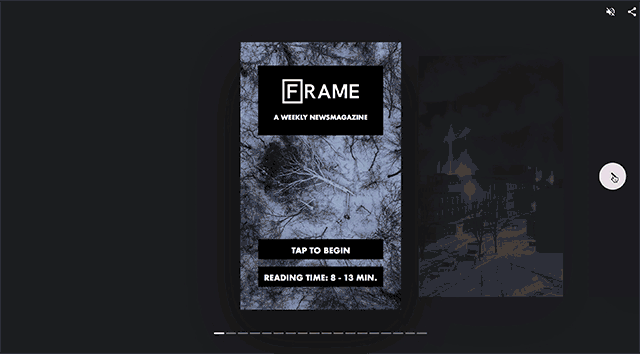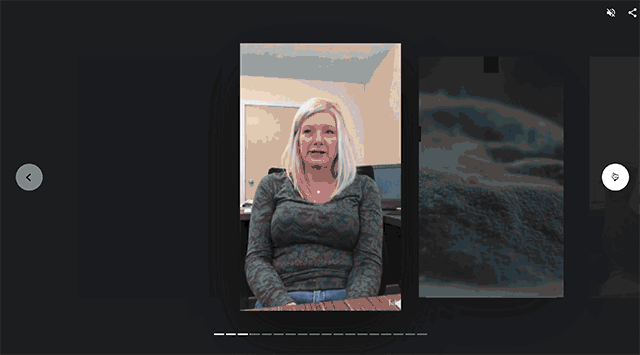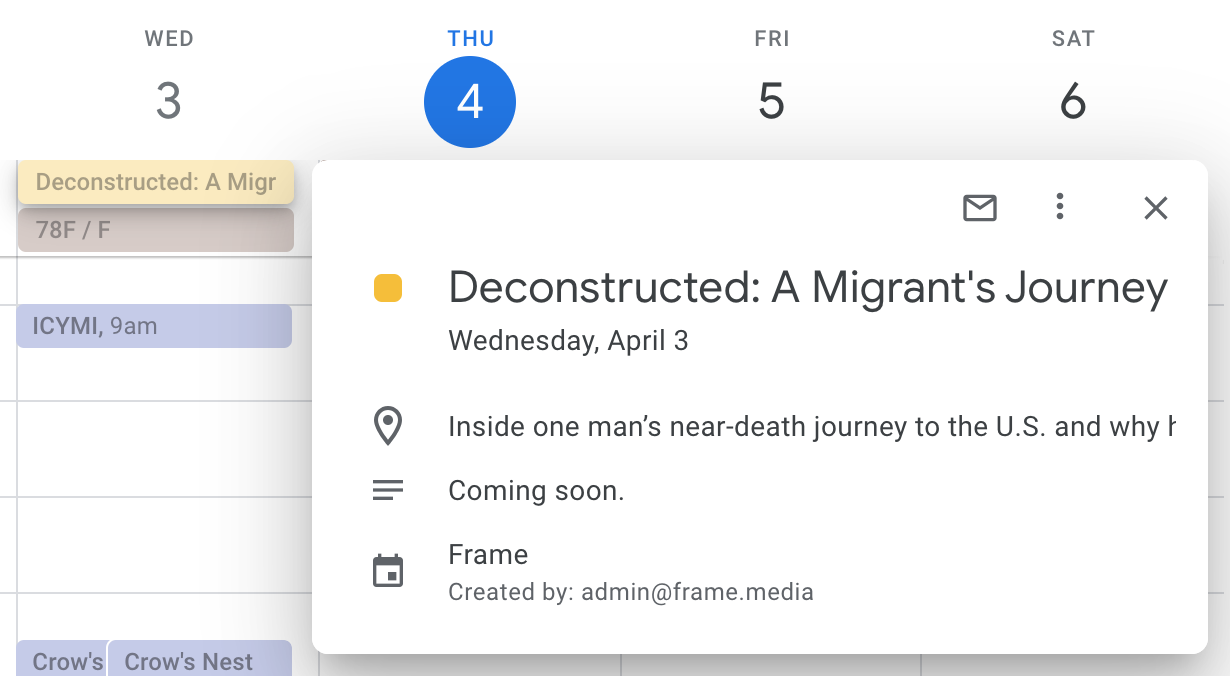There’s an empty spot on millions of coffee tables where weekly news magazines once sat. They’re not likely to make a resurgence in print, but one fledgling media company thinks they can be a trailblazing digital product.
While the past decade has been economically devastating for many news organizations, newsweeklies have fared even worse. Glossy, full-color pages are expensive. So is national and worldwide distribution. And when the internet-driven churn of the news cycle puts value on speed and novelty, in-depth looks at yesterday’s news doesn’t sell like it used to.
A year and a half ago, Time Magazine cut its circulation by a third in a “cost-reduction” measure. Newsweek, once an esteemed weekly that boasted a circulation of 3 million, was sold to an organization with ties to a Christian university and raided by a Manhattan district attorney as part of a probe into its parent company’s finances, which then fired Newsweek’s top editors for reporting on their own company.
And, maybe worse of all, plenty of young people have never picked one up.
“A lot of people (of my generation) don’t even know what a news magazine is anymore, ” said Ben Moe, a 25-year-old Columbia University graduate based in New Jersey, as he rattled off magazine names whose wilted footsteps he is now stepping into: “Time, Newsweek, New Yorker, The Economist…”
[the_ad_placement id=”_rail_pos_1″]
Moe is, in his own words, “taking a giant leap of faith” and launching a publication called Frame that he hopes will lift the experience of the weekly news magazine into the digital world. The beta version, launched March 27, is a narrative-driven blend of photos, videos and maps, all presented in a mobile-friendly vertical format that’s reminiscent of The Washington Post’s AMP stories. Frame isn’t another phone-cluttering app, but a digital experience in which users sign up through Frame’s website and then access articles and features through a variety of novel portals.
Moe said that Frame is built around two ideas: leveraging technology to tell stories in new ways and providing the in-depth context that weekly news magazines have traditionally filled.

Context is important “in a moment when the public trusts the news less than anyone ever has,” he said. “So many people interact with the news through social media and get headline notifications … But what are the root causes? What’s the history?”
To appeal to attention spans that have grown used to constant news bombardment, Frame will fuse just about every media type available — text, photos, videos, podcasts, technology that hasn’t been invented yet — to tell its stories on a web app that will work on any type of device. Moe sees this as not as a departure from newsweeklies of yore, but more of an ode to what they were known for: blending text, images and graphics together on glitzy pages to tell stories; an experience that was lost, he said, when news magazines went online.
“The news magazine has gone extinct for all intents and purposes. There’s no digital equivalent to that experience,” Moe said.
The digital reimagination process yielded other benefits, especially for Frame’s mission to provide context. Typically, when reporters and editors create stories for print or more linear digital publications, they have to make tough choices about what to keep and what to cut. Interesting information might never make it to publication simply because it doesn’t fit into a story’s structure.
RELATED READING: Why women are primed to pioneer zero-waste journalism
But Frame’s content management system includes a feature called “detours,” where audiences can decide to follow story threads in directions that articles typically wouldn’t allow.
In Frame’s launch story about the opiate-related death of a teenager in North Dakota, for example, audiences can take detours to learn more about fentanyl and why it’s popular among drug dealers. Detours are presented in the same blend of media formats as the main story.

“It makes context more of an exciting task. Like a Wikipedia wormhole that you actually remember,” Moe said.
It’s a clever reimagination of hyperlinking, an issue that the journalism industry grappled with, and then gave up on, many years ago. Linking out to information on other websites adds credibility and is an important service to audiences, but it also means that news organizations lose eyeballs, and audience members break their attention to the original piece of content. Wrapping it all into one story package offers the context that audiences are searching for and the attention that news organizations need to survive.
It’s one of a two things that made me silently gasp during my conversation with Moe. The other was Frame’s distribution strategy.
Moe’s last job was at Mic, a media company that caters to millennials. Last fall, Mic laid off a majority of its staff and was sold to another media group after Facebook canceled a video partnership deal. Though it had attempted to diversity, Mic was still largely dependent on Facebook for distribution of its content and, therefore, revenue. Though he left five months before the sale, Moe saw what a dependence on a platform could do to a media organization.
[the_ad_placement id=”_rail_pos_2″]
With Frame, he’s mostly ditching platforms altogether.
Frame doesn’t share its stories on Facebook or Twitter. It doesn’t rely on Google traffic. It doesn’t even have the type of homepage that most news organizations have.
“We’re not asking you to come to where the trucks leave with the newspapers,” Moe told me. “We’ll handle that. We’ll meet you where you are and where’s best for you.”
Moe said that he and his chief product officer sat down with their phones and looked for ways to distribute their news where other news organizations were least vying for audiences’ attentions. They landed on calendars (Google Calendar and iCal for now), text messages and email. Though plenty of newsrooms reach audiences through email, Frame will include it because, like text messages and calendar notifications, it feels more personal.
“Having those notifications on your notifications pane is more valuable than (platforms like) Apple News because there’s less of them. We’re reaching people in a more intimate place,” Moe said.
When users subscribe to Frame, they’re prompted to select which ways they’d like to receive news. If they enable calendars, Frame’s stories will be added as all-day events with a headline and some text. Users can load the story right from that pane in Google Calendars, or through a pop-up link in iCal. New stories automatically load on users’ calendars as Frame prepares and publishes them.

I’ve written about how media organizations like The New York Times and The Minneapolis Star Tribune have used calendars to distribute specific areas of coverage, but as far as I know this is the first instance where a news organization is distributing all of its content through a calendar.
It’s worth recognizing that calendars are still platforms. Google and Apple could theoretically change how their calendars work in ways that could be detrimental to Frame’s publishing strategy. But this takes advantage of such a fundamental and established (and mundane!) component of technology that it’s difficult to see that happening. It’s also hard to fathom that news organizations haven’t thought of using calendars to this effect before.
In another departure from traditional newsweeklies, Frame will distribute its features over the course of the week, rather than all at once.
“People don’t have the time for that anymore,” Moe said. “We believe the modern magazine is sections that come out through the week.”
Frame’s only published “section” so far is called “Deconstructed.” It’s a meaty look at the context behind the a big news story, its size and importance akin to the cover story of a more traditional newsweekly. Moe asked me not to mention other planned sections, but I can say that they definitely feel like the sort of novel recurring features you’d expect from a weekly news magazine.
It also has a subscription model that newsweekly readers should find familiar — $5 per month or $50 annually. Though Moe has a few other ideas for revenue, he’s betting that subscribers will cover a good chunk of Frame’s budget.
“We believe that people will pay for quality journalism and that’s being borne out all over the place, from the Correspondent to The New York Times,” he said.
Moe and Frame’s chief product officer, Tom Barnes, are confident enough in their business model’s success that the duo has bootstrapped the entire project. Currently Frame’s only full-time employees (they also have a part-time narrator and part-time music director), the duo are in conversations with investors to bolster the revenue they’ve already earned through subscriptions. They are also looking to other funding opportunities, like underwriting, branded content and licensing their proprietary content management system.
Frame’s first few weeks (again, still in beta) have been modest. But Frame isn’t launching as a flashy, expensive project from an established news organization. It’s just a well-thought-out product with some bold ideas and a refreshing respect for its audience.
I suspect other news organizations will take note and begin employing some of Frame’s ideas soon. But Moe isn’t too worried about that.
“If Frame is a model for what the magazine looks like in the 21st century, which is what we’re hoping and aiming for, we hope that others will look like us later,” he said.







